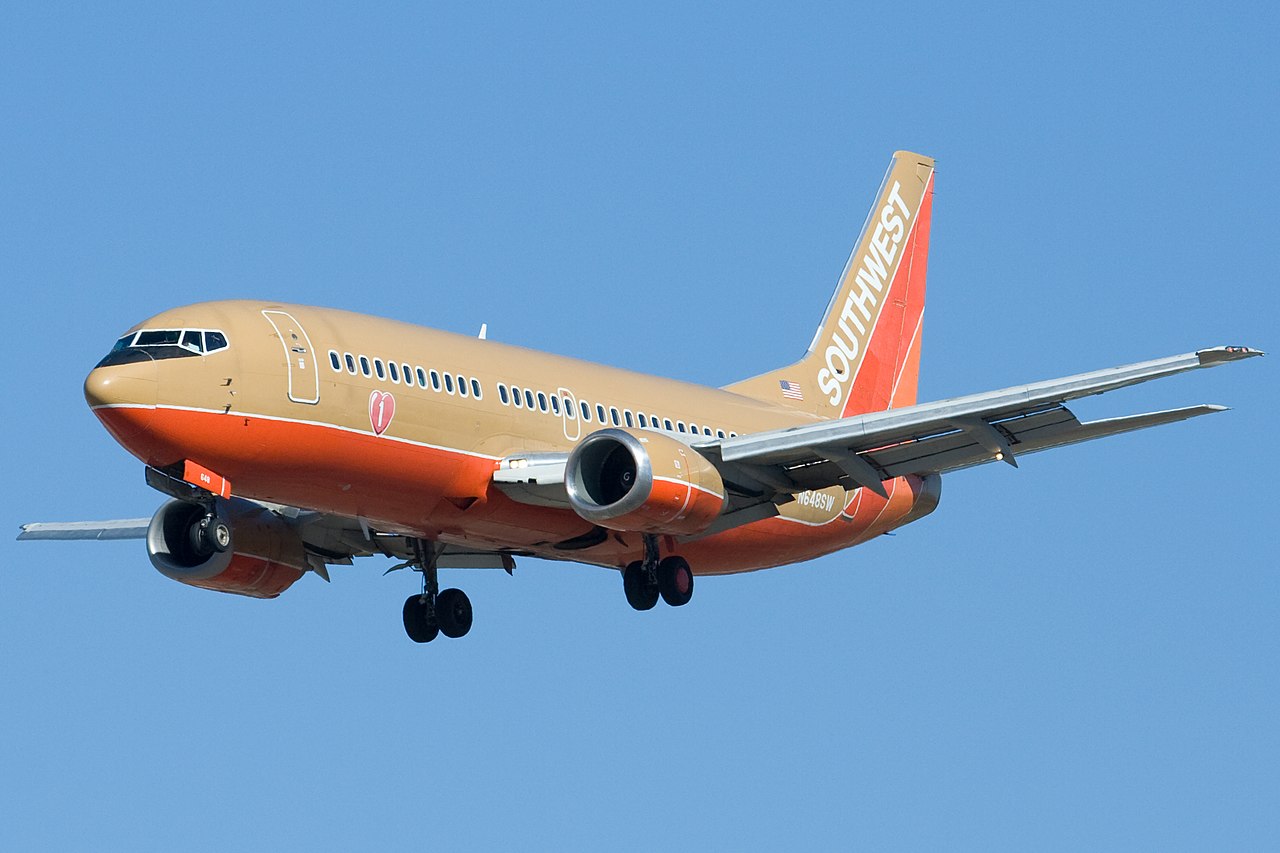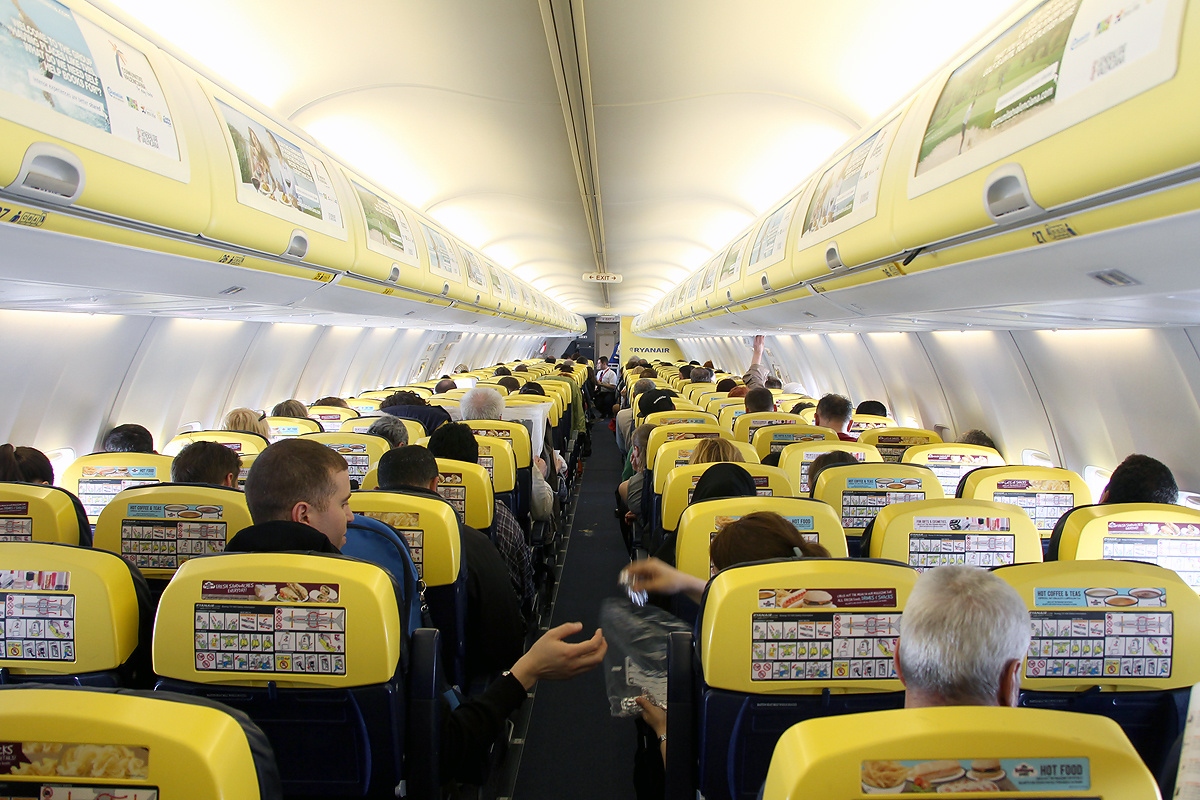Southwest Airlines and the low-cost carrier boom
Commercial
23 March 2021
In 1967, a new airline was born - Air Southwest Co. Wanting to serve airports in Texas, they were barred from entering the industry as a result of tight regulations and lobbying from existing airlines. After multiple court battles and a name change, Southwest Airlines finally began operations in June of 1971. Through much of 1978, Southwest only flew routes within Texas, again as a result of heavy regulation.
In the summer of 1978, the Civil Aeronautics Board approved Southwest to begin flying routes to other cities such as Saint Louis, Minneapolis/St. Paul, Detroit, Chicago, etc. Later that year, President Jimmy Carter signed the Airline Deregulation Act, which dissolved the Civil Aeronautics Board. Airlines could now compete and fly freely on any routes they chose.

A Southwest Airlines Boeing 737-300 at SJC in 2007. Photo by Dylan Ashe; CC BY-SA 2.0.

A Frontier Airlines Airbus A318. These aircraft were retired in 2013. The airline only operates A319s, A320s, and A321s, but they plan on retiring the A319 in 2021 as they receive the A320neo. Photo by BOSOX Photographix; CC BY 2.0.
At the time, many people involved in the airline industry opposed deregulation, mainly because it would affect their job security and destabilize the industry. Deregulation made the industry competitive - fiercely so. The existing ("legacy") airlines scrambled to gain an edge in the industry. This mainly came in the form of cost cutting with the goal of lowering fares. While it was effective in making flying cheaper, the passenger experience often suffers as a result. The plus side is that flying was available to more people, stimulating the tourism industry as well.
With more people flying, much of the airport infrastructure that was built before deregulation could no longer support the passenger flow anymore, leading to overcrowding and uncomfortable airport experiences.
Southwest is given most credit for being one of the first to operate as a low-cost carrier, or LCC. These airlines, such as Spirit, Frontier, JetBlue, Ryanair, and EasyJet operate on similar guiding principles that allow them to minimize their costs and thus reduce ticket prices:
- Use the same type of aircraft. Southwest and Ryanair exclusively use Boeing 737s, and many others use A320 variants (Spirit, Easyjet, Frontier, etc). By using the same type of aircraft, maintenance procedures are standardized, allowing for consistency and less staff. Aircraft changes are also easier - if one aircraft has a technical issue that causes a delay, using another aircraft of the same type won't affect passengers as much. Additionally, pilots only need one type rating, and flight attendants don't require as much safety training.
- Operate using a point-to-point route system. Most legacy airlines use hub-and-spoke systems, where they fly larger aircraft between main hubs, and let regional airlines operate final flights. This is efficient for legacy airlines, who can direct traffic through a few hubs, which offers many route options for passengers. However, it increases travel time and inconvenience for passengers with more layovers and a greater chance of a delay. With a point-to-point system, airlines choose their routes mainly based on which have the most demand. Flights might be operated from larger cities to smaller ones, or between two mid-sized cities. By using this model, the airline makes careful decisions, maximizing their profits while minimizing travel time for passengers.
- Maximize aircraft capacity. Certain airlines are notorious for having uncomfortable seats, such as Spirit, Frontier, and Ryanair. By using slimline seats and decreasing legroom, the airline can get more passengers on the aircraft, which increases revenue. The passengers will be uncomfortable, but still find it worth it because of the low fare.
- "Unbundle" the extras. Many LCCs sell "bare-bones" tickets, which don't include much except a seat on the aircraft. Spirit and Frontier receive the most negative attention for this in the United States. Things that will cost extra include: selecting a seat, bringing a carry-on bag, checking a bag, inflight food and drink, etc. The airline will often depend on extra fees to earn a profit on an individual seat, since many travelers consider them necessary for their travel intentions. But, this model is ideal for solo travelers looking to go on a short vacation where they can fit everything they need inside a backpack.
Low-cost carriers have, in many senses, fundamentally changed the way the airline industry operates. Economic analysis has shown that LCCs beginning a new route at an airport will reduce fares for all airlines operating there. Legacy airlines have introduced basic economy fares as a result of LCC competition - tickets that don't include many standard amenities. This is so that their flights will still appear on travel booking sites that sort by price.
Because LCCs operate so differently from legacy airlines, it's often difficult for legacy airlines to compete with them. Yet, they manage to find ways to cut costs. Unfortunately for passengers, this often means that air travel is uncomfortable, and it will likely become increasingly so. Although flying isn't nearly as glamorous as it was in the past, it's become cheaper and more accessible than ever before.

The interior of a Ryanair Boeing 737-800. Notice the advertisements on the overhead bins and safety cards printed on the seatbacks. Ryanair seats do not have seatback pockets, which are standard on most airlines. Photo by Konstantin von Wedelstaedt; GNU FDL.
References
- Dresner, Martin, Jiun-Sheng Chris Lin, and Robert Windle. "The Impact of Low-Cost Carriers on Airport and Route Competition." Journal of Transport Economics and Policy 30, no. 3 (1996): 309-28. http://www.jstor.org/stable/20053709.
- Kahn, Alfred E. "Airline Deregulation". The Concise Encyclopedia of Economics. https://www.econlib.org/library/Enc1/AirlineDeregulation.html.
- Kenneth Button. "Low-Cost Airlines: A Failed Business Model?" Transportation Journal 51, no. 2 (2012): 197-219. doi:10.5325/transportationj.51.2.0197.
- Lavery, Brian. "Low-Cost Carriers: A Force for Globalization and Growth". Chazen Web Jornal of International Business. https://www0.gsb.columbia.edu/mygsb/faculty/research/pubfiles/2817/Low-Cost%20Carriers%20--%20A%20Force%20for%20Globalization%20and%20Growth.pdf
- Müller, Kathrin, Kai Hüschelrath, and Volodymyr Bilotkach. "The Construction of a Low-Cost Airline Network - Facing Competition and Exploring New Markets." Managerial and Decision Economics 33, no. 7/8 (2012): 485-99. http://www.jstor.org/stable/41682555.
- "Southwest Airlines History: 1966 to 1971". Southwest Airlines Newsroom. https://www.swamedia.com/pages/1966-to-1971.
- "Southwest Airlines History: 1972 to 1977". Southwest Airlines Newsroom. https://www.swamedia.com/pages/1972-to-1977.
- "Southwest Airlines History: 1978 to 1983". Southwest Airlines Newsroom. https://www.swamedia.com/pages/1978-to-1983.
- Tan, Kerry M. "Incumbent Response to Entry by Low-Cost Carriers in the U.S. Airline Industry." Southern Economic Journal 82, no. 3 (2016): 874-92. http://www.jstor.org/stable/44283480.
- Teece, David J., Gary Pisano, and Amy Shuen. "Dynamic Capabilities and Strategic Management." Strategic Management Journal 18, no. 7 (1997): 509-33. http://www.jstor.org/stable/3088148.